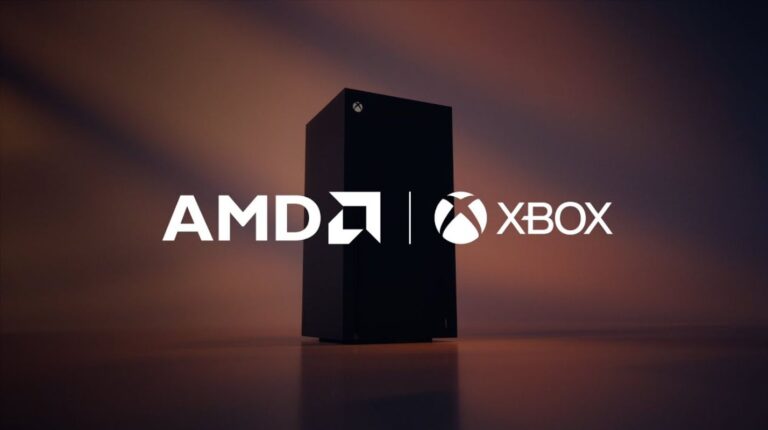Xbox Magnus And PS6 Orion: Leaks, Facts, And The Shifting Console Landscape


- Xbox Magnus is officially confirmed to use custom AMD silicon and to be part of a shared multi-device ecosystem
- Leaked specifications, such as modular chiplet design and AI-focused processors, remain unverified
- PS6 Orion leaks suggest a monolithic AMD-based APU with RDNA 5 graphics and high-speed GDDR7 memory
- Xbox strategy include Game Pass price hikes and ad-supported cloud gaming
Jump to:
Microsoft Confirms The Next Generation of Xbox Hardware
Microsoft’s next-generation console, Xbox Magnus, has become one of the most closely watched projects in gaming. Between verified corporate partnerships and speculative hardware leaks, the picture is both clearer and more complex than ever.
At the same time, Microsoft’s ecosystem is changing dramatically, with major Game Pass Ultimate price increases and early tests of ad-supported cloud gaming shaping the company’s future direction.
In June 2025, Microsoft publicly announced a new long-term partnership with AMD to create custom silicon for upcoming Xbox hardware. The collaboration covers consoles, handhelds, and cloud-enabled devices, forming the foundation of the company’s next-generation gaming platform.
“I am thrilled to share (that) we’ve established a strategic multi-year partnership with AMD to co-engineer silicon across a portfolio of devices including our next-generation Xbox consoles, in your living room, and in your hands,” Xbox President, Sarah Bond, said in a YouTube video confirming the deal with AMD.
Xbox executives stated that future hardware will share a common architecture and that the Xbox experience will no longer be limited to one device or store. This means Magnus is designed to integrate seamlessly across console, PC, and cloud environments.
Microsoft also reaffirmed its ongoing commitment to producing dedicated gaming hardware. Despite speculation that Xbox could shift entirely to streaming or third-party publishing, the company confirmed that physical consoles remain central to its strategy.
The Game Pass Restructure And Price Increases
Alongside its hardware ambitions, Microsoft has introduced sweeping changes to its subscription model. On Oct. 1, 2025, the company rebranded its Game Pass tiers and significantly raised prices. Game Pass Core became Essential, Standard was renamed Premium, and the highest tier, Game Pass Ultimate, jumped from $19.99 to $29.99 per month.
In return, the new Ultimate plan includes a larger game catalog of more than 400 titles, enhanced cloud gaming up to 1440p, and bundled Ubisoft+ Classics access. Subscribers also receive Fortnite Crew benefits and expanded Microsoft Rewards integration.
The price increase signals a new phase in Microsoft’s business model, where subscriptions play a larger role in funding both first-party development and cloud infrastructure. However, early feedback shows frustration among long-time subscribers who view the increase as excessive, especially in regions without price protections or limited access to Ultimate’s full feature set.
While Xbox are adamant about the new prices, they will not be implemented across the globe as initially intended due to local regulations protecting consumers from sudden changes to concurrent subscriptions.
Microsoft Experiments With Ad-Based Cloud Gaming
In parallel with the Game Pass overhaul, Microsoft is testing a free, ad-supported version of Xbox Cloud Gaming. Internal trials, confirmed by official communications to partners, allow users to stream select games after watching short advertisements.
Earlier reports suggest that watching two minutes worth of ads will grant one hour of playtime, while players will be capped at five hours of gaming per month in exchange for ads instead of loading screens. These numbers are likely to change.
The service currently operates in a closed beta for Microsoft employees but is expected to expand to select markets by 2026. The company describes this initiative as a way to reach new audiences and make premium gaming accessible to users who do not subscribe to Game Pass.
While Xbox may view ad-based gaming as part of the future of the industry, players are not thrilled with this direction. Steam is not impressed with ads in games either and has officially announced the ban of games on its platform.
“Developers should not utilize paid advertising as a business model in their game, such as requiring players to watch or otherwise engage with advertising in order to play, or gating gameplay behind advertising. If your game’s business model relies on advertising on other platforms, you will need to remove those elements before shipping on Steam,” the company says in its terms and conditions for developers.
The Xbox Leaked Hardware Video
Leaked documentation from hardware partners and manufacturing chains points to an ambitious console design. Sources describe Xbox Magnus as using a chiplet-based AMD APU combining Zen 6 CPU cores with RDNA 5 graphics architecture. Some documents claim the system will feature up to 48 GB of GDDR7 memory on a 192-bit bus and a built-in neural processor for AI workloads.
Other reports mention a modular design that could allow hardware refreshes or upgradable components during the generation. Power consumption estimates range from 250 to 350 watts, far higher than current Xbox Series X figures.
None of these claims have been confirmed by Microsoft or AMD. Historically, leaked hardware details often originate from early engineering samples that may differ from final production models. Still, Bond said this in the same AMD partnership announcement video:
“Together with AMD we’re advancing the state of art in gaming silicon to deliver the next generation of graphics innovation to unlock a deeper level of visual quality and immersive gameplay and player experiences enhanced with the power of AI, all while maintaining compatibility with your existing library of Xbox games.”
Leaks Surrounding PS6 Orion
Leaks indicate that Sony’s next-generation console, PS6 Orion, could use a monolithic AMD APU built on a 3 nm process. The rumored architecture combines Zen 6 CPU cores with RDNA 5 graphics, targeting a balance between high performance and efficiency.
Memory may consist of high-speed GDDR7 modules with a wide bus, enabling native 4K gaming at 60 fps and potential performance scaling to 120 fps. Ray tracing improvements are also anticipated, offering substantial graphical enhancements compared to PS5.
Unlike Xbox Magnus’s proposed chiplet design, Orion is expected to maintain a single-die structure, simplifying production but limiting upgrade flexibility. Some leaks suggest a companion handheld device may share Orion’s architecture, hinting at a unified gaming ecosystem spanning home and portable platforms.
How The ASUS ROG Xbox Ally Handheld Fits Into The Big Picture
The Xbox ROG Ally has entered the market as a premium handheld gaming device and is now available to pre-order, with a price that reflects its high-end components and performance capabilities.
Positioned above budget or entry-level options, the Ally allows Microsoft to target gamers who value portability without compromising on graphical fidelity or access to the full Xbox ecosystem.
The ROG Ally complements the console lineup by enabling players to continue gaming across different contexts while remaining fully connected to Game Pass, cloud saves, and Xbox Live services.
What Is Confirmed, And What Remains Speculative
Confirmed facts include the AMD partnership, the unified Xbox hardware ecosystem, and the company’s renewed focus on physical consoles. Everything else, from architecture details to performance targets, remains speculative.
If the leaks prove accurate, Magnus could represent a major departure from the traditional console cycle, offering upgrade paths and modular scalability similar to gaming PCs. If not, it will still form the backbone of Microsoft’s new hardware generation designed around Game Pass integration and hybrid cloud capabilities.
Microsoft’s Broader Strategy
The convergence of hardware, subscriptions, and advertising marks a clear shift for Xbox. Magnus provides the physical foundation for performance gaming, while Game Pass delivers recurring revenue and cloud streaming ensures accessibility.
However, by raising prices and adding an ad-based tier, Microsoft has managed to anger most of its customer base. The current strategy is unclear, which is what led to rumors of Xbox going back on its earlier commitment of a next gen console in 2026 or later to begin with.
Price fatigue among subscribers and skepticism toward in-game advertising could harm adoption if not handled carefully. Balancing innovation, accessibility, and consumer trust will be critical as Xbox prepares for its next major hardware era.

















